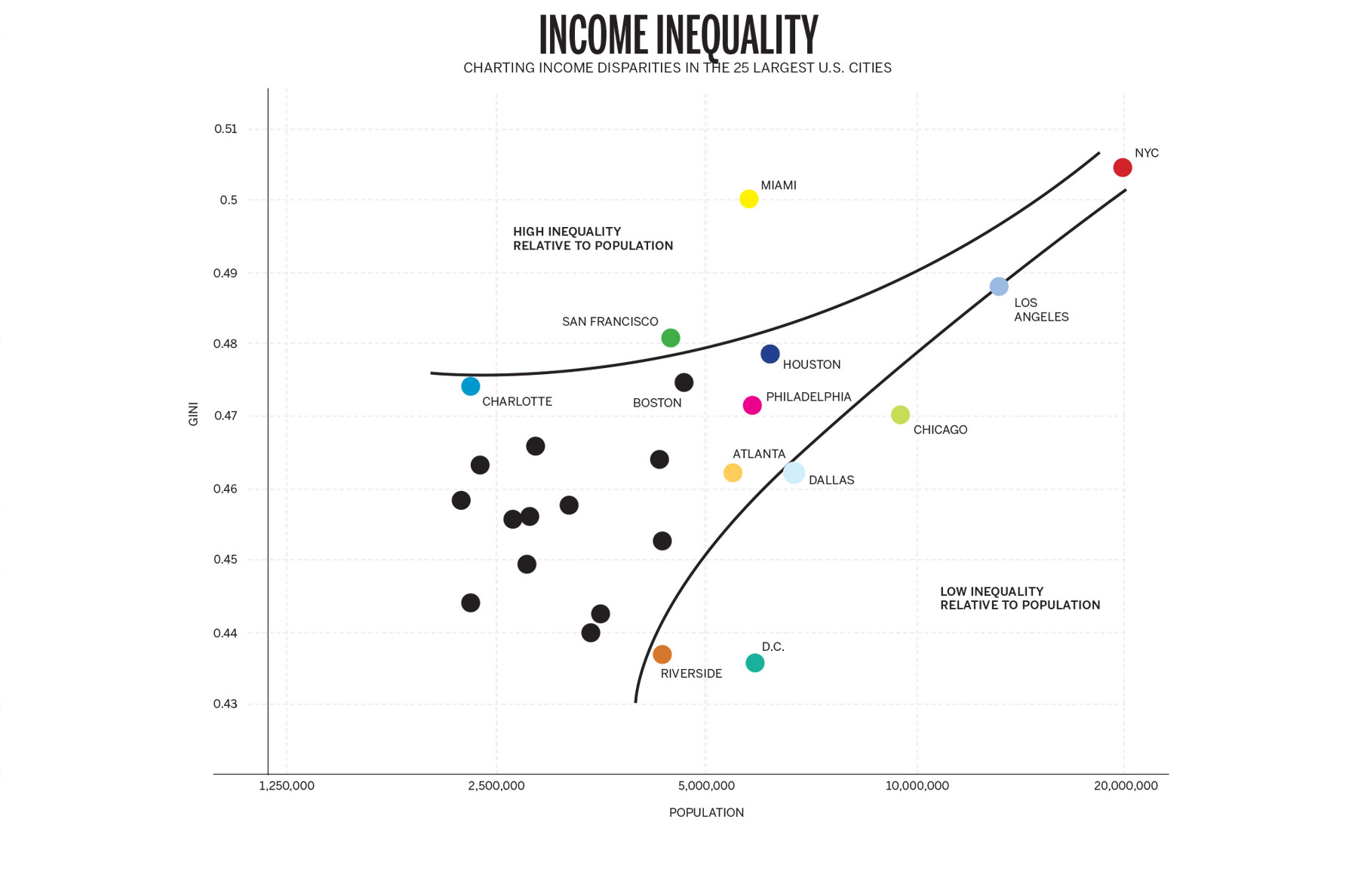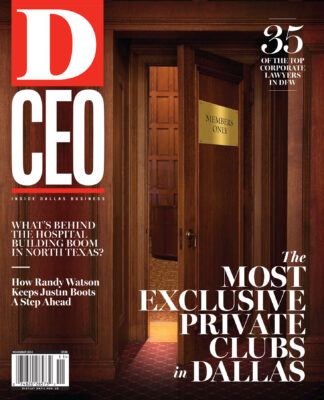Dallas revels in its riches. The mansions, the fashions, the galas, and the philanthropy are all on display. We count the locals on the Forbes’ list of the richest Americans. And that rascally J.R. Ewing? He’s an icon here, not an offensive TV stereotype.
Conspicuous celebrations of wealth in a region with many poor and middle-class families raise questions about income inequality in the Dallas-Fort Worth area. Is it unusually high? How does it compare to the rest of the nation?
Economists often measure income inequality with Gini coefficients, a statistic developed by the Italian Corrado Gini in 1912. A completely equal society, where everyone had the same income, would produce a Gini coefficient of zero; complete inequality, with one person earning all the income, would yield a value of one. The real world, of course, is somewhere in between.
According to the Census Bureau’s American Community Survey, the U.S. five-year average Gini coefficient was 0.4712 in 2012—high for a developed country. Turning to the nation’s 366 metropolitan areas, the ACS data show that Gini coefficients range from a high of 0.5376 for Bridgeport-Stamford-Norwalk in Connecticut to a low of 0.3944 for Ogden-Clearfield in Utah.
North Texas comes in at 0.4622, ranking as the 99th most unequal urban economy. The Houston area has slightly greater inequality, at 0.4787.
Texas’ most unequal market is surprising. It’s Bryan-College Station, which ranks fifth in the nation. No doubt the inequality reflects a mix of well-paid Texas A&M administrators and professors and a large number of students working part time. Four other college towns are among the nation’s top 10 in inequality—Athens, Georgia; Gainesville, Florida; Hattiesburg, Mississippi; and Morgantown, West Virginia.
Big cities offer the best opportunities for entrepreneurs and educated workers to earn high incomes; so we’d expect them to have relatively high Gini coefficients. Among the 25 largest metropolitan areas, the greatest inequality occurs in the most populated area: New York City, including its Long Island and New Jersey suburbs. Miami and San Francisco exhibit a high degree of inequality relative to population. So, to a lesser extent, do Charlotte, Boston, and Houston.
Looked at in this way, DFW has low inequality relative to population. Among the Top 25, it ranks fourth in population and 13th in inequality. Other cities with relatively low inequality relative to population include Chicago; Washington, D.C.; and Riverside, California.
Advocates for greater income equality might find the Dallas area’s money-worshiping culture garish, but the Gini coefficients tell us that there’s nothing unusual about the gap between rich and poor in North Texas.






